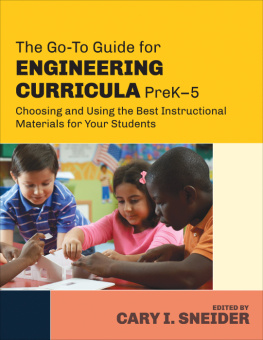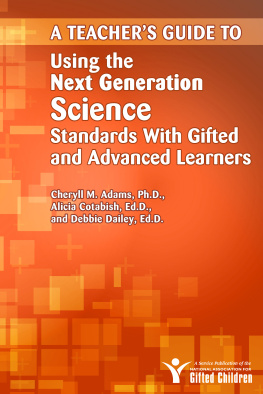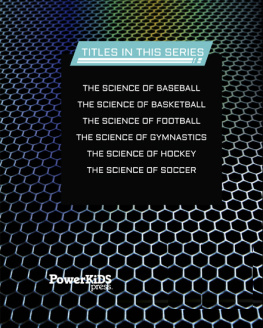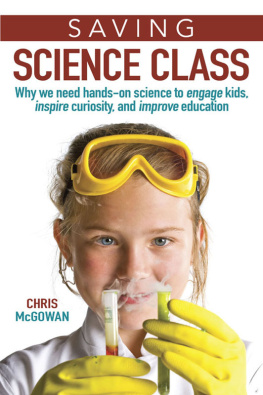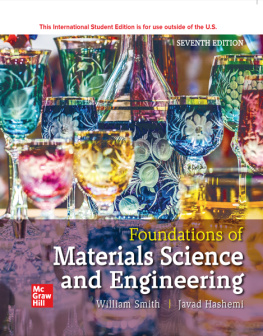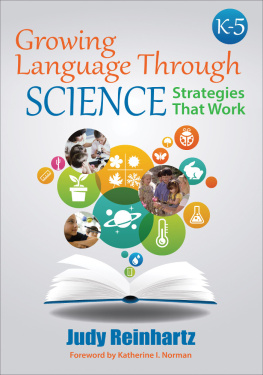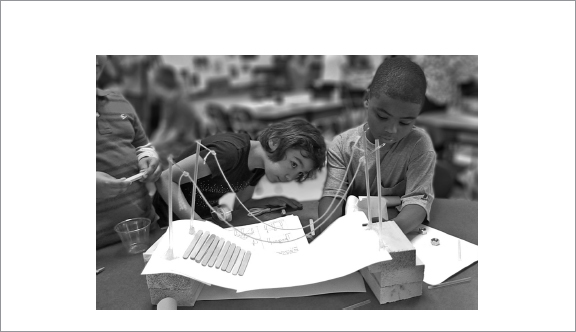Cary I. Sneider - The Go-To Guide for Engineering Curricula, PreK-5: Choosing and Using the Best Instructional Materials for Your Students
Here you can read online Cary I. Sneider - The Go-To Guide for Engineering Curricula, PreK-5: Choosing and Using the Best Instructional Materials for Your Students full text of the book (entire story) in english for free. Download pdf and epub, get meaning, cover and reviews about this ebook. year: 2014, publisher: SAGE Publications, genre: Politics. Description of the work, (preface) as well as reviews are available. Best literature library LitArk.com created for fans of good reading and offers a wide selection of genres:
Romance novel
Science fiction
Adventure
Detective
Science
History
Home and family
Prose
Art
Politics
Computer
Non-fiction
Religion
Business
Children
Humor
Choose a favorite category and find really read worthwhile books. Enjoy immersion in the world of imagination, feel the emotions of the characters or learn something new for yourself, make an fascinating discovery.
- Book:The Go-To Guide for Engineering Curricula, PreK-5: Choosing and Using the Best Instructional Materials for Your Students
- Author:
- Publisher:SAGE Publications
- Genre:
- Year:2014
- Rating:5 / 5
- Favourites:Add to favourites
- Your mark:
The Go-To Guide for Engineering Curricula, PreK-5: Choosing and Using the Best Instructional Materials for Your Students: summary, description and annotation
We offer to read an annotation, description, summary or preface (depends on what the author of the book "The Go-To Guide for Engineering Curricula, PreK-5: Choosing and Using the Best Instructional Materials for Your Students" wrote himself). If you haven't found the necessary information about the book — write in the comments, we will try to find it.
How to engineer change in your elementary science classroom
With the implementation of the Next Generation Science Standards, your students wont just be scientiststheyll be engineers. But that doesnt mean you need to reinvent the wheel. Respected science educator Cary Sneider has done the groundwork for you, collecting a full range of time-tested curriculum materials to seamlessly weave engineering and technology concepts into your math and science lessons.
In this volume, youll find descriptions of instructional materials specifically created forand tested inelementary science classrooms. Features include:
One of the most well-respected science educators in the country, Cary Sneider was an NGSS Writing Team Leader and is an associate research professor at Portland State University.
Knowledge and confidence to teach engineering in the elementary science curriculum comes with access to high quality instructional materials. Without question, this book provides the information teachers and curriculum specialists need to make well-informed decisions that will give students the opportunity to use the engineering design process to both apply and develop their knowledge of science. With elementary engineering in the STEM spotlight, this book is timely and much needed!
-Page Keeley, Corwin Author and Science Education Consultant
Dr. Sneiders book is a just-in-time, much needed resource for elementary teachers, administrators, and teacher educators. With the advent of the Next Generation Science Standards, many practicing elementary teachers are in great need of support. They need to know that there are high-quality, well-thought-out curricular options that they can use to scaffold engineering in their classrooms. This book provides exactly the introduction that they need. The curricula are thoroughly described, and the book includes everything that a teacher or an administrator needs to evaluate a curriculum for potential classroom use. This book is an extremely valuable tool in the quickly changing field of education.
- Laura Bottomley, Directory, The Engineering Place
Cary I. Sneider: author's other books
Who wrote The Go-To Guide for Engineering Curricula, PreK-5: Choosing and Using the Best Instructional Materials for Your Students? Find out the surname, the name of the author of the book and a list of all author's works by series.

